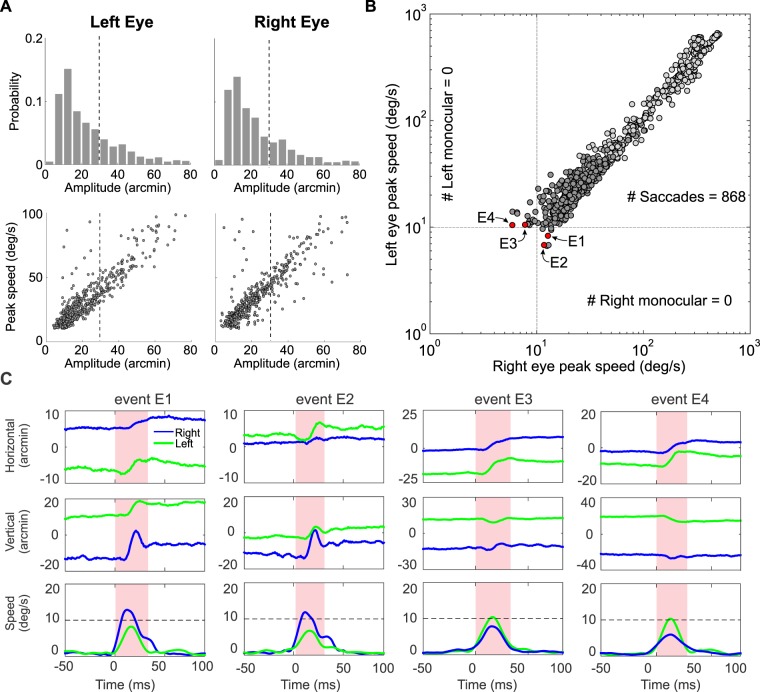Figure 2.
Saccade characteristics during head-fixed fixation. Data were recorded by means of a binocular DPI eye-tracker. To be labeled as a saccade or microsaccade, an oculomotor event needs to be faster than 10°/s in at least one eye. (A) Distributions of saccadic amplitudes (top) and the main sequences (bottom) in both eyes (left and right columns). Panels zoom in on the range of small saccades. The dashed vertical lines mark the 30′ amplitude threshold used to define microsaccades. (B) Comparison between peak speeds in the two eyes. Every saccade and microsaccade is represented by a circle at coordinates given by the highest speed measured in the two eyes within the event's interval. Darker circles represent microsaccades. Dashed lines mark the speed threshold. (C) Examples of microsaccades with peak speed higher than 10°/s in one eye only. Different events (red circles in B) are displayed in different columns. For each event, the horizontal and vertical traces in both eyes (top graphs) are shown together with the instantaneous eye speed (bottom). The pink-shaded region marks the event's duration. The dashed horizontal line represents the saccade speed threshold.

